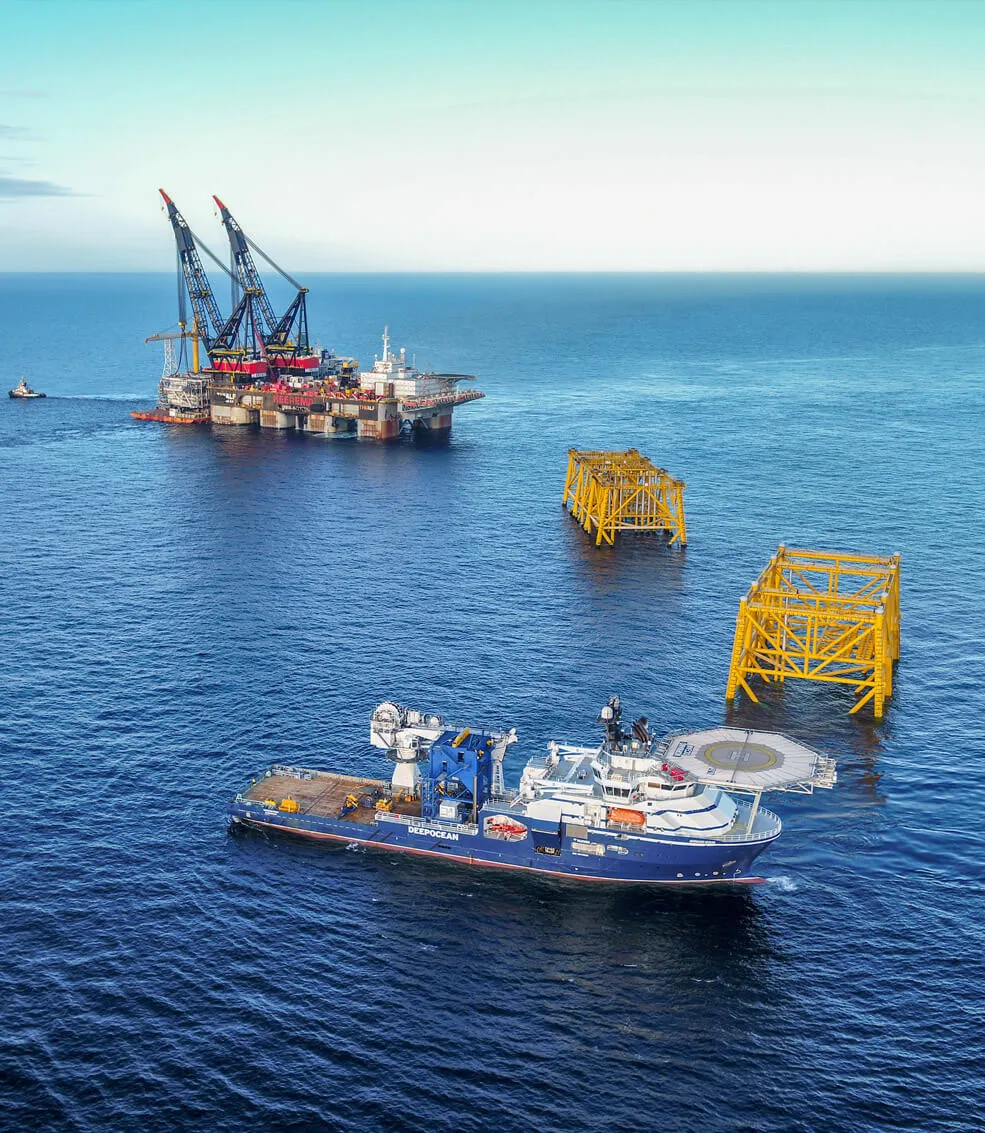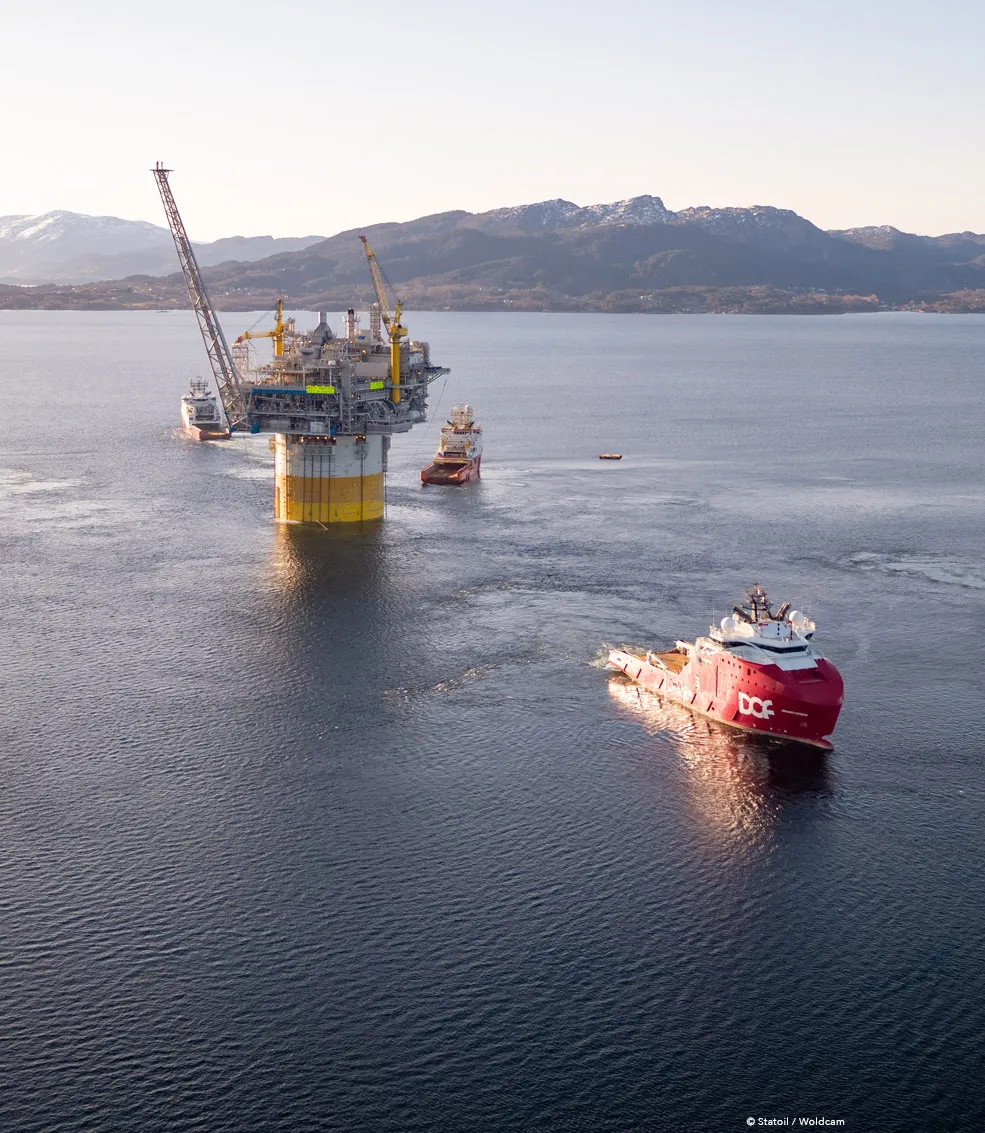Batteries on board: offshore vessels setting the course
Demand is growing in the offshore market for supply and service boats equipped with hybrid battery power. Like many energy majors, Equinor and Shell are increasingly stipulating batteries on board in their charter contracts.
First explored in the recently completed FellowSHIP project, battery hybrid power installed on offshore supply vessels proved to give 15-25 per cent fuel savings, and even greater emissions reductions. Those results planted the seeds of a transition that is taking hold across the industry.
Equinor, (then Statoil) was a partner in FellowSHIP, and has been working on CO2 reduction since 2011. The goal for Equinor’s logistics and emergency operations is a 50 per cent reduction of CO2 emissions by 2030 compared to 2011. “If we are to meet that goal, we need to take action now,” says Helge Såtendal, principal consultant, Supply chain management, Marine operations in Equinor. “Batteries have come on stronger recently as a viable, long-term alternative to help us reach this goal.”
Vessels can now use batteries to replace generators while at berth, Såtendal tells. “Running machines at low loads creates a high amount of emissions for relatively little power when berthed. With this solution, the generator can be shut down when the battery is charged. The battery is used until it is down to 25 per cent of capacity, then recharged.”
Most supply bases in Norway now have onshore power supply, allowing vessels to use electricity from shore when at berth. “A combination of batteries and onshore power will reduce CO2 emissions by allowing a vessel to go from berth with fully loaded batteries, charged with electricity from shore.”
But the benefits of batteries don’t stop at fuel efficiency and emissions reduction, Såtendal says. “Captains say batteries also enhance performance. They feel more secure knowing that they have battery power at hand, because batteries have a shorter response time, allowing instant application of power when needed.”

The emergence of green contracts
In June 2017, Equinor awarded contracts to five shipowners covering seven supply vessels, all of which were stipulated to be equipped with hybrid battery operation, and the possibility of shore power connection.
None of these vessels had systems for battery operation or shore power at the time. The equipment is being subsequently installed, and the Norwegian NOx fund is seen as a key supporter and contributor to the shipowners in their efforts to install batteries.
The vessels will have Battery Power Notation from DNV GL, which allows them to achieve savings in fuel consumption while working in dynamic positioning alongside the installations. Equinor already had two battery-operated vessels on contract at the time of the signing.
“Battery power can be retrofitted,” Såtendal confirms. “Installing battery hybrid power does not require a newbuild. Equinor requires batteries on board, but on long contracts, to give the owner the chance to retrofit, and get the payback over time.”
Såtendal reports that Equinor has gotten positive industry feedback for the seven charters. “We look to have a ‘green clause’ in all contracts in time. We believe that this type of contract will drive technology development and contribute to continuous improvement.”
Equinor is also part of the Green Coastal Shipping program in Norway. This participation has garnered attention in the political arena, as well as the public. “I would say overall that we are getting positive recognition for going greener, and we are committed to pursuing this development,” Såtendal states.

Getting people on board, not just batteries
More than just installing batteries on a ship, there are other factors that must line up if the full effect of battery hybrid power is to be reached. “We have a big tool kit,” Såtendal claims.
One effective tool is crew motivation. “A committed crew is essential. They must be encouraged to use the solution, not forced. If they don’t want to use it, it will never work as intended.
“Our experience is that both young and old crew members are interested in contributing, so this is not necessarily a generational issue. That being said, it is definitely positive for recruiting that we can say we are doing our part to make the industry greener.”

The Shell take on battery hybrid
Bo Jardine is Shell’s Global Category Manager – Marine, responsible for chartering OSVs. A key step on his road to embracing the benefits of batteries on board came at the invitation of DNV GL. “We attended a global seminar on marine batteries from DNV GL in March 2018, and I would say that we left the seminar eager to move on batteries. Since then we have worked to advance the case for eventual use within our chartered fleet very quickly.”
Now, he says, Shell’s aim is to commercialize the technology, enabling more widespread use of batteries on board offshore vessels. “We took a different tack than relying on subsidies to implement the technology. Batteries can improve performance, cut fuel consumption, and reduce CO2 emissions. Battery hybrid gives between roughly 12 and 30 per cent fuel reduction when applied to peak shaving and spinning reserve. All that makes for a solid business case.”
Until recently, implementation has been bespoke, and thus very costly. “There are a lot of boats that have been built without batteries, so it is unlikely to make retrofitting economically viable with one-off solutions. We believed there must be a better way to do this,” says Jardine.
Shell came up with “BOB”, an acronym for battery on board.
Shell’s vision of BOB is an industry-standardized ESS (Energy Storage System) package consisting of two parts:
- The BOB Box – a 20 ft ISO footprint box populated with batteries and supporting battery management systems, which is multi-class approved and suited for installation on different vessel types
- BOB PMS – a power management system and transformers installed and integrated on board the vessel in a shipyard.
“We envisage a 20-foot standard container that can basically serve as a plug-and-play solution on vessels,” Jardine states. “There are quite a few of these systems being tried out by OEMs and owners, with Seacor being a good example.”
A simplified solution is the key to making it doable, Jardine maintains. “Once the optimal solution is devised, we can eventually bring in economy of scale and reduce the price even more. Even though standardized systems are a way off, we have come pretty far. The OEMs we talk to are all dialled in to this trend.”

Finding the green zone
When evaluating whether to move to battery hybrid, Jardine maintains that the first thing to consider is, ‘Why go green?’ “There is increasing pressure from IMO 2020. But for us as a charterer, we simply want to have more efficient boats in our fleet. Batteries benefit in many ways, including combating high fuel burn and high emissions from traditional methods.”
Jardine confirms that Shell will grade owners against efficiency. “The more efficient vessels will win the contracts. Staying in business is what will drive this movement.” He points out that owners get about 30 per cent of the benefit of battery hybrid solutions. “That means we as charterers are essentially paying for the battery instead of the fuel. And since batteries can pay for themselves over their lifespan of 10 years, there is a good business case for owners going green.”
Shell wants to be a responsible charterer, Jardine relates, adding that they currently have tenders out for offshore support vessels requesting provision of batteries. “We are proud to say that we are ‘going green in marine’. Being a mariner, I appreciate seeing cleaner boats go to sea, and we believe being more efficient is positive for business in every way.”

Leveraging green tech
Like Equinor, Jardine and Shell see technology as a key enabler to the green trend: “The enabling technology is available now. There have been massive advances in AI, sensors, and batteries. We are also seeing technology transitioning from other industries. In my career, I have never seen such rapid change in the maritime industry as we are seeing today.”
Jardine believes industry alignment will be needed in order to keep the trend moving in the right direction. “The industry needs to find a shared vision and adopt it. We have to align on a common goal, and the classification societies have a big role to play there. It will come down to having a standard notation, like we did with dynamic positioning, and class has been working hard to get us there.”
Summing up, Bo Jardine is sold on sharing the benefits of batteries on board: “I hope we can adopt some kind of BOB, a standard ESS that is accessible for everyone, so that we can all begin to enjoy the benefits of going green.”
Contact us
- Source of statistics; Maritime Battery Forum, https://afi.dnvgl.com/Statistics
View image copyright information
